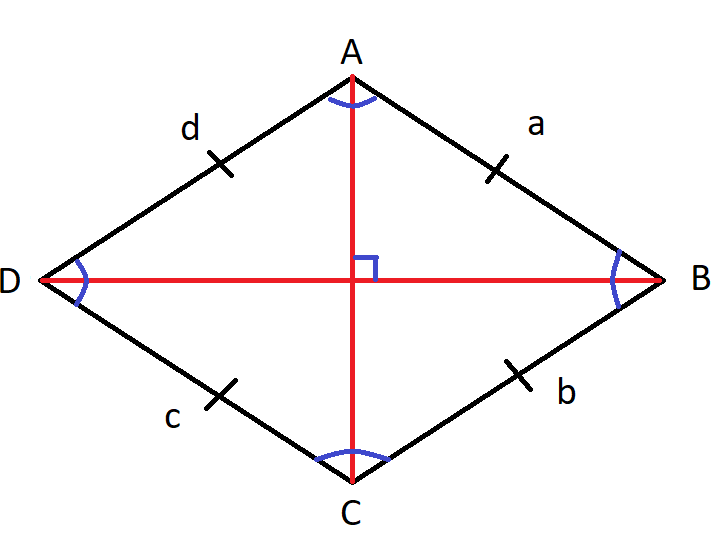A parallelogram has sides that measure 8 cm and 5 cm.
💡 What is its perimeter?
26 cm
[Perimeter = 2 × (8 + 5)]
Each side of a rhombus is 7 m long.
💡 What is the perimeter of the rhombus?
28 m
(Perimeter = 4 × 7)
A parallelogram has a base of 9 cm and a height of 6 cm.
💡 What is its area?
Answer: 54 cm²
(Area = base × height)
A rectangle has a total perimeter of 32 cm. The rectangle is 10 cm long. What is the height of the rectangle?
6 cm
What is the difference between a Rhombus and a Parallelogram?
A rhombus is a quadrilateral with all four sides of equal length, while a parallelogram has opposite sides that are equal and parallel.
A rhombus has diagonals where one is 4 cm longer than the other.
If the shorter diagonal is 10 cm,
💡 what is the area of the rhombus?
Answer: 70 cm²
(BD = 10, d₂ = AC → Area = ½ × 10 × 14 = 70)
 What type of Quadrilateral is this?
What type of Quadrilateral is this?
A Rhombus
A kite’s area is 84 m². One diagonal is 12 m.
💡 Find the length of the other diagonal.
Answer: 14 m
(84 = ½ × 12 × d₂ → 84 × 2 ÷ 12 = 14)
A square has a total perimeter of 12 inches. What is the area of the square?
9 sq inches
Which quadrilateral only has one pair of parallel sides?
A Trapezoid/ Trapezium